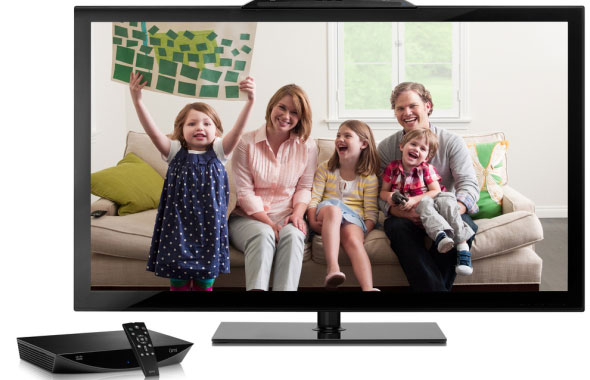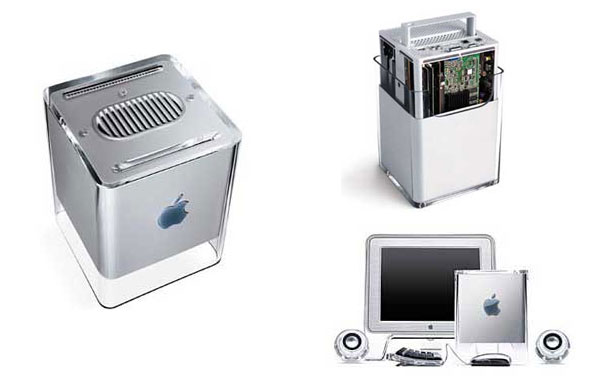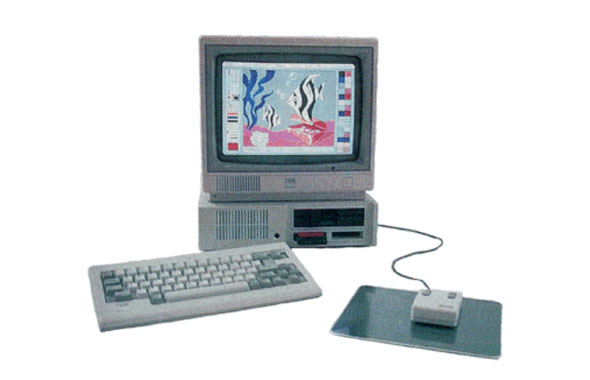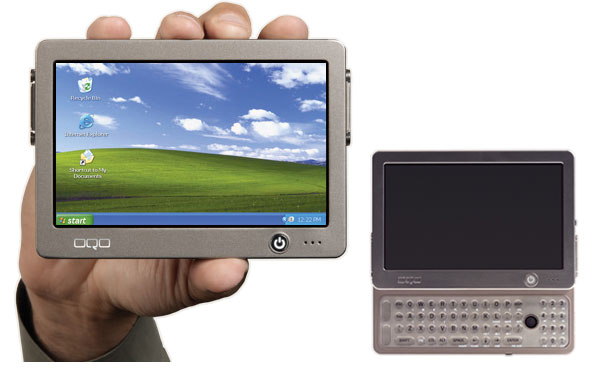The 15 Most Overpriced Gadgets of All Time
There’s nothing wrong with charging a lot of money for your gadget. Some of the best things in life are the exact opposite of free; a truly superior product is definitely worth spending more. Unfortunately, sometimes tech companies think too much of their wares and too little of your intelligence. The result is a product whose price is out of whack with its real value in the marketplace.
Here are 15 truly outrageous offenders, the most overpriced gadgets of all-time.

Microsoft Surface with Windows RT ($619 w/ Touch Cover)
How would you like a brand-new convertible with a one-of-a-kind retractable roof for the reasonable price of $22,000? There’s just one catch. You must pay an extra $10,000 for the convertible roof you saw highlighted in all the commercials. At its $499 base price, Microsoft’s first tablet costs the same as the fourth-generation iPad, the well-established leader in the tablet market. The attractive Surface has a worse screen than the iPad, it lasts 5 hours less on a charge and, at launch time, had only a handful of decent apps for its nascent Windows RT operating system. However, you may want the Surface because of its heavily-advertised Touch Cover keyboard, a must-have accessory that will set you back an extra $119, even though it costs Microsoft only $16 to manufacture. That’s $619 for a new, unproven tablet that trails the $499 market leader in most ways.
More: 12 Hottest Holiday Tablets

Voodoo Envy 133 ($2,099 - $3,299)
One of the most anticipated products of 2008, the 0.7-inch thin Envy 133 notebook was supposed to inspire its name in all of your friends. But at a starting price of more than $2,099 that jumped to $3,300 when fully configured, this 3.4-pound notebook was far too light on performance and specs to justify its heavy price. The high-end Envy 133 configuration featured a modest 1.8-GHz Intel Core 2 Duo CPU, just 2GB of RAM and 64GB of internal Flash storage that copied files so slowly it was more of a Solid State Park than a Solid State Drive. Worse still, the notebook lasted just 2 hours and 32 minutes on a charge, making this ultraportable not very portable at all.
More: Top 10 Ultrabooks

Cisco umi ($599 Plus $24.99 a Month)
Psst. Come over here. I have a copy of this week’s Village Voice newspaper that I’d like to sell you for just $25. What? “It’s free,” you say? Well, my version has slightly sharper print so I’m sure you and millions of others will be more than willing to pay my premium. Cisco applied this perverse logic to its 2010-era umi home telepresence system, which cost an eye-popping $599 for equipment plus $24.99 a month to provide a slightly better video chat service than competitors like Skype and Google offered for free. With the umi, which was short for You / Me, you could hook up a camera to the top of your TV and either talk to one of the five other umi users -- or with your friends on Google Talk who were paying nothing at all.
Sign up to receive The Snapshot, a free special dispatch from Laptop Mag, in your inbox.
More: 8 Sweet Cameras for Every Shooter

Sony VAIO P Series ($899)
Back in 2009, netbooks were as hot as the Jonas Brothers, and everyone wanted to get in on the action. On the low end, non-computer companies like Sylvania (yes, the light bulb people) were making their own versions of netbook. On the high end, Sony tried to reinvent the genre with its 1.4-pound, 8-inch VAIO P. At first glance, the VAIO P was an engineering marvel. The system was thin and narrow enough to fit into an overcoat pocket while providing premium features like a bright 1600 x 768 pixel display and 3G connectivity. However, with super-sluggish performance, mediocre battery life and a stiff keyboard, the notebook wasn’t good enough for extended use. At $899 and up, the value just wasn’t there when the best premium netbooks at the time cost $499.
More: Longest Lasting Laptops

Apple Lisa ($10,000)
In the early 1980s, few people had seen a computer with a graphical user interface. Xerox had been experimenting with GUIs since the 1970s and launched its Xerox Star 8010 in 1981, but it was Apple’s Lisa that finally brought windowed operating systems to the mainstream in early 1983. Unfortunately, for the privilege of rolling a mouse around Lisa’s 12-inch, 720 x 360 black-and-white screen, you had to pay a cool $10,000 ($22,000 in 2011 dollars) and put up with a pair of unreliable “Twiggy” floppy drives that used their own proprietary 860K disks. At the same time, you could buy a brand new Apple IIe, the leading home computer, for just $1,395, a Compaq Portable PC for $3,590 or an original PC for far less.
More: 7 Things Apple Must Do to Get Its Swagger Back

Nokia Booklet 3G ($1,720 Over Two Years)
Subsidized netbooks with two-year 3G contracts were always a bad idea, but never more so than with the 2010 Nokia Booklet 3G. For $299 and a commitment to give AT&T $60 a month for two years ($1,720), unsuspecting shoppers got an attractive but incredibly incapable 10-inch netbook. Perhaps Nokia and AT&T thought the Booklet’s Macbook-esque aluminum chassis would distract consumers long enough that they would make it through the return period without noticing the system’s glacial 4,200-rpm hard drive, painfully slow Atom Z530 processor or cramped keyboard.
More: Top Windows 8 Laptop Gifts

DIVX ($499 Plus $4.50 per Disc)
How would you like to pay $500 just for the right to pay another $4.50 every time you want to rent a movie? That was the premise behind DIVX, a late 1990s movie rental system designed by someone who had watched too many episodes of "Mission Impossible" and loved the idea of self-destructing media. After buying a $500 DIVX Player, you could then purchase any of about 400 movies on disc for about $4.50. A mere 48 hours after you watched the film, it would expire and you would have to throw away the disc or pay another $3.25 for another 48 hours. Circuit City, the leading seller of DIVX players and discs, touted the new technology as a convenience that would help you avoid late fees. However, the player was $100 more than a regular DVD player and the discs were more expensive than renting a film at the store.
More: Best Smart TVs

BlackBerry PlayBook ($499)
Research in Motion Co-CEOs Mike Lazaridis and Jim Balsillie must have been eating some psychotropic blackberries when they laid out the MSRP for the company’s first tablet in spring 2011. At $499 – the same price as the industry-leading iPad 2 – the BlackBerry PlayBook provided a significantly smaller screen and an operating system so half-baked that it didn’t even include native email support at launch. Within a few months, the price of the PlayBook had dropped dramatically. Today, you can get one for just under $180, which is still too expensive. Much-better 7-inch Android devices like the Nexus 7 and Amazon Kindle Fire cost around the same price and have a far better selection of apps.
More: Essential Tablet Accessories

Motorola Laptop Dock ($499)
A dual-core smartphone is already more powerful than an older PC, so why not use it as one? That was Motorola’s thinking when the company launched the Laptop Dock, a keyboard / screen combo that turned the Atrix 4G handset into a notebook runnin, the browser-centric Webtop OS. At $499 by itself, or $300 when bought together with the Atrix, the 11.6-inch Laptop Dock cost the same or more than a full-fledged Windows 7 netbook that could run all of your software. Considering that its cramped keyboard was worse than those on most netbooks, Motorola’s dock was one of the biggest rip-offs of 2011.
More: 10 Hottest Holiday Smartphones

AT&T VideoPhone 2500 ($1,599)
Today, anyone can conduct an online video chat for free, using Skype, Google Talk, FaceTime or any of a dozen other solutions. But back in 1992, we didn’t have broadband Internet or HD webcams. So when AT&T released the VideoPhone 2500, a standard landline handset that could send and receive video, the world took notice . . . of its whopping $1,599 price. Considering that it both sent and received video on a sluggish 19.2bps modem, the VideoPhone 2500’s 10 frame-per-second performance was pretty impressive for the time. However, to use the device, you needed your friends and family to buy it too, something few consumers were willing to do.
More: Best Bluetooth Speakers

Apple Macintosh G4 Cube ($1,799)
How much extra would you pay for sexy? If you were a Mac maven in 2000, Steve Jobs thought you would spend $1,799 for the PowerMac G4 Cube, a tiny cube-shaped version of Apple’s PowerMac G4 desktop. Unfortunately, at that price, the Cube was a square peg trying to fit into the round hole of Apple’s product line. At the time, consumers could pay $1,000 less and get an iMac, which came with a monitor included. Creative professionals who had the money to spend preferred to buy a PowerMac G4 tower with better performance and the ability to upgrade.
More: Alive and Booting: 8 Reasons The PC Still Matters

Motorola Xoom ($1,079 Over Two Years)
When they released the first true Android slate in early 2011, Google and Motorola were a year late to the party and yet they wanted hundreds of dollars more than Apple’s belle of the ball. At a time when the iPad 2 cost $499 with Wi-Fi, or $629 with contract-free 3G service, the Motorola Xoom launched at $599 and required you to sign a two-year contract with Verizon at a minimum of $20 per month ($1,079), or $799 sans contract. While the cheaper iPad 2 had access to thousands of apps, at launch, the Xoom had a measly 46 tablet-optimized apps.
More: Top 10 Tablets to Buy or Avoid Now

IBM PCJr ($669 to $1,269)
A stripped-down chip off the old block, 1983’s IBM PCJr (PC Junior) would have been overpriced at any cost. At $1,269 with the absolutely necessary floppy drive ($669 without), the PC Jr. was quite a bit cheaper than full-fledged IBM PCs of the time, but about on a par with the Apple IIe and far more expensive than home-computing competitors like the $200 Commodore 64 and $150 TI-99/4A. Unfortunately, with its horribly stiff chiclet keyboard, slow performance, and a slew of compatibility issues that kept it from running popular PC programs, the JR wasn’t worth the premium. That year, I arrived at computer camp earlier than the other kids, just so I could grab a seat in front of a real PC rather than this awful offspring.
More: 5 Essential Tips for Gifting a Tablet

OQO Model 01 ($1,899)
In launching the world’s first 14-ounce Windows PC, OQO’s 2004 Model 01 was a true trailblazer. However, even by early 21st century standards, the Lilliputian laptop’s 1-GHz Transmeta CPU, 20GB hard drive and 256MB of RAM provided sluggish performance. Meanwhile, the tiny keyboard just felt awkward. Considering that you could get a fully functioning laptop for hundreds of dollars less, it was hard for most consumers and business users to imagine buying this severely neutered novelty for such a high price.
More: The 12 Best Gadgets You Didn't Buy

Newton MessagePad 2100 ($1,000)
By 1997, Apple had improved the software and solved a lot of the handwriting recognition problems on its Newton PDA. Perhaps because of these improvements, the company felt it could price its grayscale handheld at a whopping $1,000, more than some PCs cost. At the same time, the PalmPilot Personal cost just $299. Yes, the Newton had a better processor, more storage and a larger screen, but none of these features justified spending $700 more, even during the Internet bubble.
More: Top Android Tablets for Kids
- 10 Future-Proof Gadgets You'll Still Love Next Year
- 20 Worst-Named Phones and Tablets
- 15 Current Technologies We'll Still Be Using in 2030

